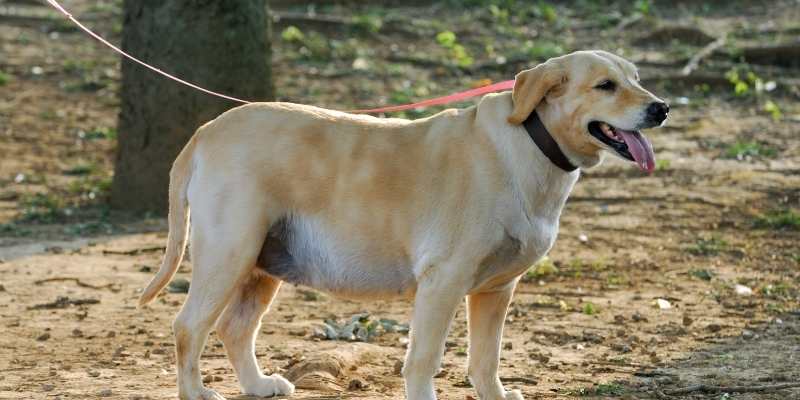For some, being a dog parent can be similar to being an actual parent. The expenses and the care that goes into taking care of them is a lot of responsibility, especially if it is your first time owning one.
Hence, many questions may arise when it comes to maintaining their health and well-being. One of the things dog owners have to consider is spaying a dog. Here, we will go over what that means, especially to neutered female dogs.
You may have heard the term spaying and neutering—there is a simple difference between the two. Spaying is a procedure done to a female dog to remove its reproductive organs. At the same time, neutering refers to the same procedure but with male dogs. The two phrases are often mixed up, so when you hear ‘neutered female dogs,’ it is most likely just referring to the spaying procedure.
Spaying and neutering is a crucial topic and directly related to animal protection rights and movements. In the US, about 85% of dogs are neutered/spayed. And 35 states require them to go through with the procedure when they are from a shelter.
Do you have a specific question about changes in dogs after spaying? Then use the table of contents below to jump to the most relevant section. And you can always go back by clicking on the black arrow in the right bottom corner of the page. Also, please note that some of the links in this article may be affiliate links. For more details, check the Disclosure section at the bottom of the page.
Here's what we'll cover:
What is spaying a female dog?

As mentioned above, spaying a female dog is a procedure to remove its reproductive organs. Known professionally as an ovariohysterectomy, the vet removes the ovaries and uterus of the canine.
This way, the spayed dog can no longer be able to reproduce and eliminate its heat cycle. What it does to a dog is also ceasing any behavior that is for breeding. If it is just the ovaries that are removed, it is called an ovariectomy. No matter what procedure you decide for your dog, both are effective and safe to do.
When to get a female dog spayed?

The best time to get a dog spay, traditionally when a dog is between the ages 4 to 6 months old. Some clinics and shelters may safely do so at the age of two months. It’s recommended to talk to your vet first, as there are various factors to consider. For example, a dog’s breed, as larger breeds typically take longer to mature. So you don’t want to spray it too early.
Also to consider is the living situation of the pets. If there are female and male puppies in your home, it is best to spay/neuter them earlier to avoid accidents. Unless you do want to have more puppies in your household!
Overall, check with your vet first if there are any health issues to be examined before the procedure occurs. And ensure you have a trusted vet/clinic to go to.
For a female dog spayed, vets are highly recommended to do so before their first heat cycle, which occurs sometime between 5 to 10 months old. Doing the procedure before that is fantastic as it reduced her risk of developing breast cancer. It can also prevent pyometra bacteria (infection of the uterus, typically with older females), ovarian and uterine tumors, and stress associated with giving birth to puppies.

Can a dog be spayed during the heat?
As I mentioned, it would be great to have the female dog spayed before their heat cycle, but how about during?
Just as an FYI, when a female dog is at heat, this means they are at an age (6-12 months) when there is a surge of estrogen, and they are ready to mate. They are basically beginning their reproductive cycle. They typically experience this twice a year.

Complications after spaying a female dog?
Spaying a dog is a standard procedure, but I don’t blame you for worrying a little bit. As it’s still a risk, though rare. Amongst potentially dangerous issues associated with spraying can be excessive blood loss. But this is more for dogs who are pregnant or are in heat at the time of their surgery.
There could be an infection, urinary incontinence, post-surgery trauma, or dehiscence (which is the incision opening up). Again, I would like to remind you that these are rare, and the vet and nurses will do a great job at recommending post-surgery care.
They will inform you to be gentle with your pets after the surgery, whether you take them home or keep them overnight at the vet. Pain medication will also be provided if needed. Your vet will give you instructions on how and what to feed your pet and what activity is allowed to do.

Will spaying calm a female dog?
Spaying a dog does not drastically change their personality, as some people may fear it will happen. Spaying will also not affect their abilities or friendliness. People may think that ‘calming’ a dog is just referring to the change of behavior regarding mating.
When female dogs are in heat, they often roam and try to leave home to search for males. This, of course, is risky in getting them lost or injured. Spaying a dog will reduce their drive to do this.
In addition to that, spaying will reduce frequent urination, aggression, and irritability during ovulation.

Do female dogs gain weight after being spayed?

This is one common misconception about spaying and neutering your pets. Sterilizing your dog DOES NOT lead to your dog becoming fat. As long as you provide them with consistent amounts of exercise and proper, healthy dog food, then your dog should not excessively gain weight.

Differences in female dog behavior after spaying
A female dog spayed aggression may be another myth about having your female dog spayed. This one is quite true, and female dogs will be less aggressive toward dogs and humans. Dogs that are not spayed often compete for attention and will fight other dogs to do so.
The same goes for when they are trying to protect their puppies-they often act aggressively or defensively when humans and other dogs approach them. When they are ovulating, they usually protect objects adopted as if they are their own babies. So, with a spaying procedure done, they are less likely to exhibit these behaviors.
Thanks for the blog graphics: Canva.com

